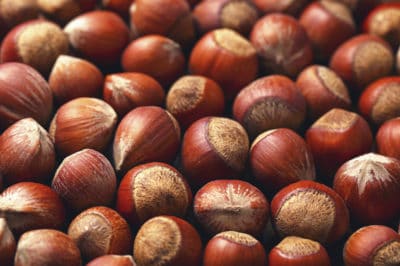What’s In a Name
Call them:
- Hazelnuts
- Filberts
- Cobnuts
as it pleases you, but never call them anything but delicious. We unravel the mysteries behind their multiple monikers.
The Botanical Background
To most modern botanists, the layman’s term for the Corylaceae family of plants is the Hazel family. All trees or shrubs belonging to the Corylus species (hardy in USDA zones 3 through 8 or 9, depending on variety) are members of the Hazel family. So it makes perfect sense that their nuts would be called hazelnuts.
One school of thought is that the name “hazel” is derived from ‘haesel,’ an ancient Anglo-Saxon word for hood. It’s said to describe the appearance of the nutshells.
So Who Came Up With “Filberts?”
In some quarters, hazelnuts were tagged filberts because of the shaggy, bearded husks that cover their shells. In Germany — where hazelnut trees are commonly grown — the word “vollbart” means “full beard.”
Another explanation is that filberts are named for the French monk St. Philibert, whose feast day falls on August 22. In the early 19th century, French-Canadian settlers in Oregon’s Willamette Valley noticed early hazelnuts ripening on that date. They dubbed them “philiberts,” and eventually, “filberts.”
Expert gardener’s tip: Today, 99 percent of the commercial U.S. hazelnut crop comes from the Willamette Valley. Most growers there call the crop filberts among themselves, but market them as hazelnuts.
And Where Did “Cobnuts” Come From?
As if you weren’t confused enough, in Great Britain hazelnuts and filberts are called “cobnuts.” The name comes from a 15th-century children’s game. Two children would each tie a hazelnut to a string and take turns trying to hit the other’s nut, or “cob.”
Fun fact: Around 1830, British horticulturists introduced a hazelnut cultivar called ‘Kentish Cob.’ Reliable harvests of delicious nuts have made ‘Kentish Cob’ very popular among home gardeners.
